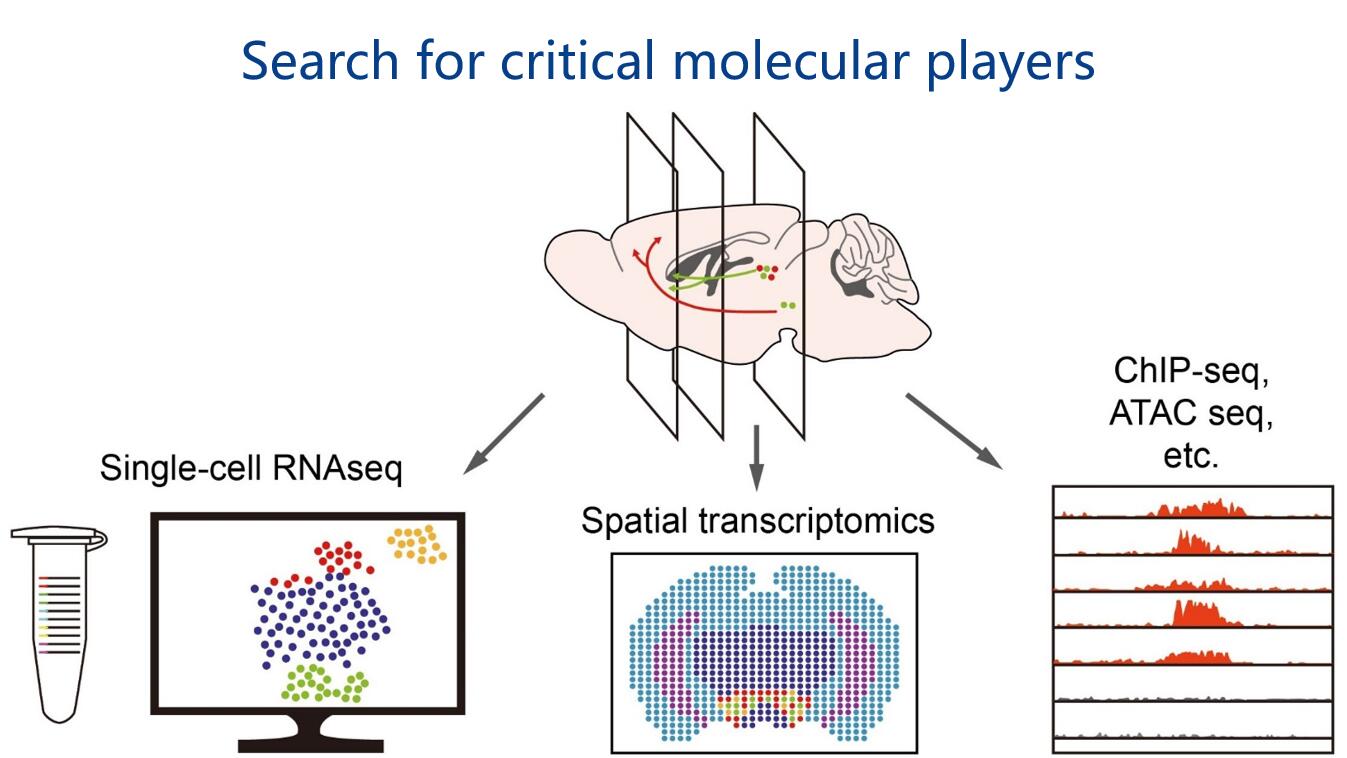Sleep takes one third of our lives and is essential for almost all animals. Sleep architecture evolves dramatically as development proceeds. In early postnatal life, the majority of sleep is so-called rapid-eye-movement (REM) sleep, while the percentage of non-REM (NREM) sleep gradually increases in later developmental stages. The total amount of sleep, including both NREM and REM sleep, gradually decreases as the development progresses from childhood, through adolescence, and into adulthood, at which stage it becomes stabilized at approximately 7-8 hours daily. Compared to adult sleep, sleep during adolescence and childhood also exhibits more features in electroencephalography (EEG), such as slow waves and sleep spindles. While most of the sleep studies focus on adult sleep, why sleep during development is different and what functions it carries remain largely unexplored.
Dr. Bian’s Ph.D. work identified a competition-based mechanism during adolescent development through which the neighboring dendritic spines in the brain (connections between neurons) compete for limited intracellular resource, such as the cadherin/catenin cell adhesion complexes, which determines spine fate and refines the neural circuitry (Cell, 2015). During his postdoc, Dr. Bian shifted his research interests to the developmental role of sleep and uncovered a novel sleep function, i.e., sleep during adolescence shapes the behavioral preference for social novelty later in adulthood by regulating the development of midbrain dopaminergic circuits (Nature Neuroscience, 2022). Furthermore, Dr. Bian’s work suggests that certain neurodevelopmental disorders (such as autism) are linked to distinct abnormalities in dendritic spines and sleep during development (Neuroscience Bulletin, 2017; Nature Neuroscience, 2022; Sleep, 2023).
The Bian lab at Westlake University studies the neurobiology of sleep from a developmental perspective. We aim to answer important questions including:
1) what developmental functions sleep carries;
2) why and how sleep
architecture is developmentally regulated.


To tackle these questions, we use mice as a model system and employ a variety of techniques including behavioral analysis, polysomnography recording, two-photon in vivo imaging, fiber photometry, opto-/chemogenetics, combined with
biochemistry and molecular biology methodologies. Current research directions of the lab include (but not limited to):
1) the circuit and synaptic mechanisms underlying the developmental role of sleep in shaping social behavioral patterns;
2) the development of sleep architecture and the controlling mechanisms;
3) shared pathology of sleep disorders and neurodevelopmental disorders (e.g., autism and schizophrenia)
and how it contributes to aberrant behaviors;
4) waking-induced DNA damage and sleep-induced DNA repair during development.


